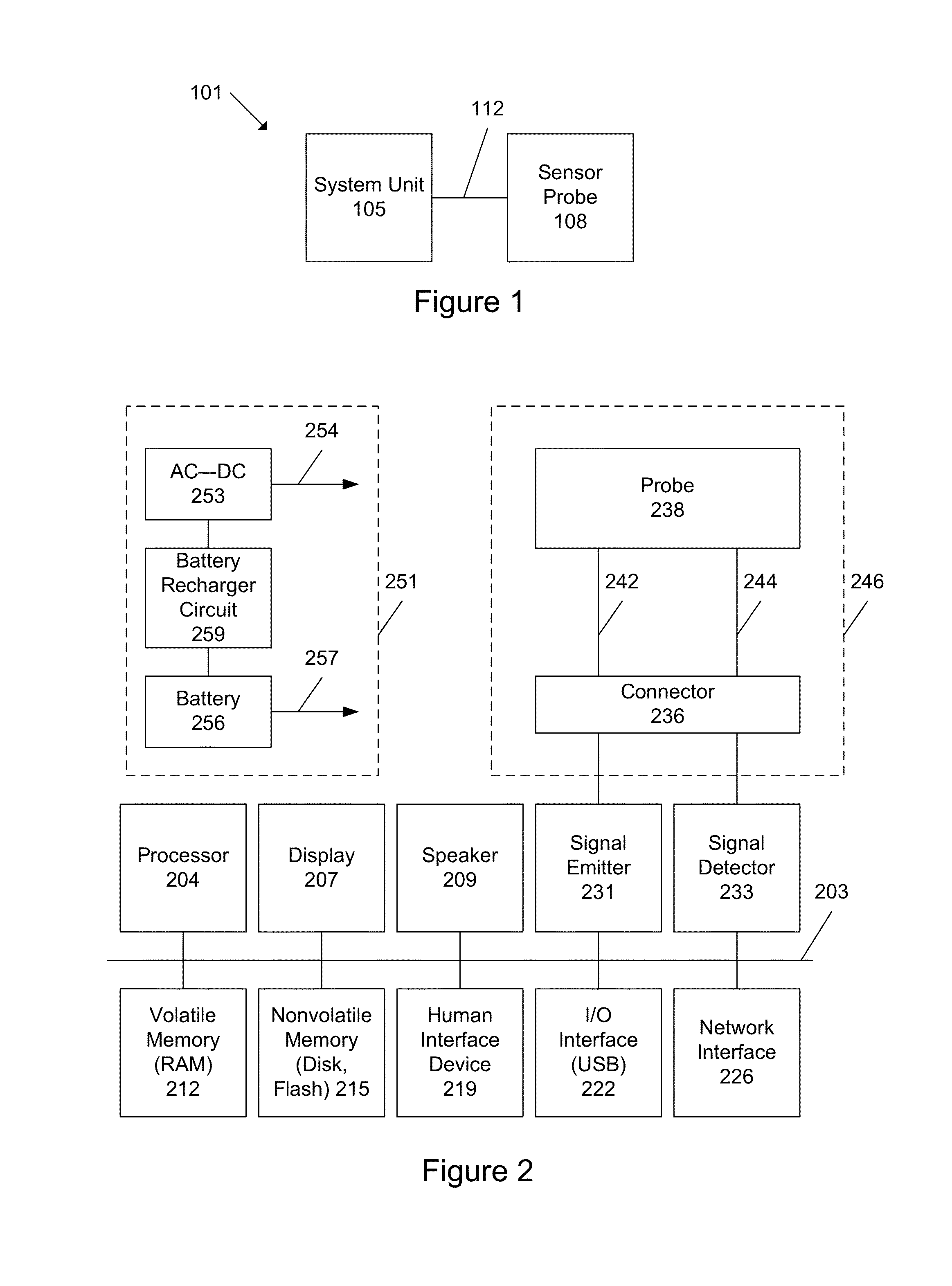Methods for locating a blood vessel
a blood vessel and method technology, applied in the field of methods for locating blood vessels, can solve the problems of major cause of death, increased pain and scarring, and longer recuperation time of patients,
- Summary
- Abstract
- Description
- Claims
- Application Information
AI Technical Summary
Benefits of technology
Problems solved by technology
Method used
Image
Examples
Embodiment Construction
[0048]During a minimally invasive or minimal access surgery, a penetration instrument such as a needle, a trocar, or a dilator is often the first instrument that is blindly inserted into a body. It is often one of the most dangerous steps during a minimally invasive or minimal access surgery because of the blind nature of this surgical step. These penetration instruments can puncture important organs or tissues such as blood vessels or nerves. While intraoperative techniques such as X-ray, ultrasound imaging, or other visual aids can provide some information, the information is limited and is not sensitive enough to detect the presence of blood vessels or nerves at the tip of the penetration instrument.
[0049]The present invention provides various penetration sensor devices and systems that allow a safe introduction of a penetration instrument into a patient's body during a minimally invasive surgery. The penetration sensor devices and systems in accordance with the present invention...
PUM
 Login to View More
Login to View More Abstract
Description
Claims
Application Information
 Login to View More
Login to View More - R&D
- Intellectual Property
- Life Sciences
- Materials
- Tech Scout
- Unparalleled Data Quality
- Higher Quality Content
- 60% Fewer Hallucinations
Browse by: Latest US Patents, China's latest patents, Technical Efficacy Thesaurus, Application Domain, Technology Topic, Popular Technical Reports.
© 2025 PatSnap. All rights reserved.Legal|Privacy policy|Modern Slavery Act Transparency Statement|Sitemap|About US| Contact US: help@patsnap.com



